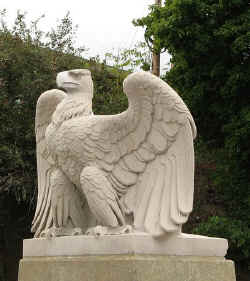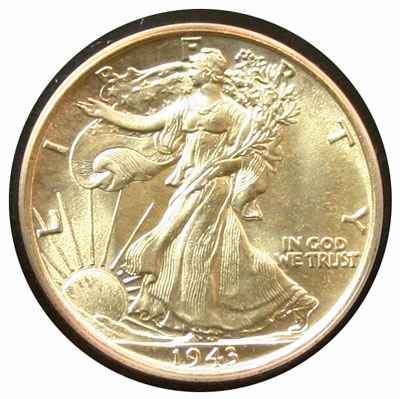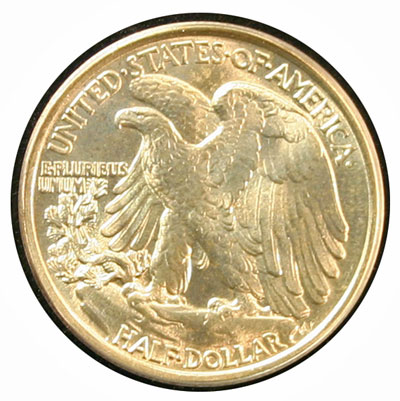Many of you know that Adolf Alexander Weinman designed the Walking Liberty Half Dollar which is also the design for the American Silver Eagle bullion coins. But did you know he also designed sculptural eagles for architecture? He did several eagles with the architectural firm of McKim, Mead & White.
Weinman, born in Germany in December 1870, moved to America when he was 10 years old. At an early age, he demonstrated his sculpting abilities. By the age of 16, he was taking night classes at Cooper Union where he won awards for his artistic prowess. As he continued his studies, he gained further instruction from Augustus Saint-Gaudens and Daniel Chester French to name just two of his notable influences.
Let’s look first at the Walking Liberty Half Dollar obverse:
This same image is perhaps more recognizable on the obverse of the proof American Silver Eagle. Some people claim this is the most beautiful coin produced by the US Mint.
But, we’re talking eagles sculpted by Weinman. Let’s look at the eagle on the reverse of the Walking Liberty Half Dollar:
What a majestic bird. But, if you look at the architectural birds he sculpted prior to designing the Walking Liberty Half Dollar, you can see some resemblance.
Though he may have done other eagles, the focus today is on his eagles in New York.
In 1908, the Prison Ship Martyrs Monument At Fort Greene Park in Brooklyn, New York was first opened honoring the 11,500 patriots – men, women and children – who died on the British prison ships moored in Wallabout Bay in the East River.
The overall monument was designed by the architectural firm of McKim, Mead & White, but Weinman’s sculpting abilities were integral to the design. In addition to the lantern, Weinman sculpted four half-ton eagles to guard the four corners of the monument.

Unfortunately, the city had theft and vandalism problems over the years and had to remove the eagles from the monument. For the hundredth anniversary of the monument, a multi-million dollar restoration of the site included bringing the eagles back.
With its wings in a more upright position, the Fort Greene Park eagle does not look very much like the Walking Liberty Half Dollar eagle, but take a look at another of his sculptural eagles:

Yes, this is a frontal view where the Walking Liberty Half Dollar eagle is a side view, but don’t they look similar?
This stone eagle is one of the 22 that stood above the columns of Penn Station another effort by the architectural firm of McKim, Mead & White. The upper building of Penn Station opened in 1910 and was demolished to make way for Madison Square Gardens in 1963-65.
The stone eagles weigh 5700 pounds with height of five feet and wing spread of almost six feet. The demolition team began lowering these proud birds in October 1963. Weinman also did other sculptures for the Penn Station that did not fare as well in the demolition as did the eagles.
Even so, various sources give different counts of how many of Weinman’s 22 Penn Station birds still exist. Two reside outside Penn Station, one at Cooper Union, one at Hicksville, four in Philadelphia, one at the Smithsonian and several others at various sites.
This photo by Al Castelli shows more of the similarity of the Penn Station eagles to Weinman’s Walking Liberty eagle:

Mr. Weinman definitely had talent that we can enjoy today in his coin designs and in his architectural sculptures.
Resources (click on links below for more information and more pictures):
Fort Greene Park Monument November 2008
Fort Greene Park Monument Prison Ship Martyrs Monument
New York Architecture – Penn Station
New York Architecture – Penn Station Gallery
Forgotten NY Street Scenes – The End of Penn Station


